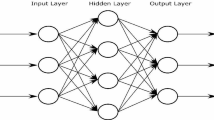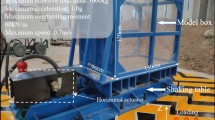Abstract
The strength reduction factors are not only the key factors in determining seismic action for force-based seismic design, but also the key parameters to derive the inelastic response spectra for performance-based seismic design. In this paper, with a high quality ground motion database that includes a reasonable-sized set of records from China, a statistical study on the strength reduction factors is conducted and a new expression of strength reduction factors involving classification of design earthquake, which is an important concept to determine design spectra in Chinese seismic design code, is proposed. The expression of strength reduction factors can reflect the ground motion characteristics of China to a certain extent and is particularly suitable for Chinese seismic design. Then, the influence effects of site condition, classification of design earthquake, period of vibration, ductility level, earthquake magnitude and distance to fault on strength reduction factors are investigated. It is concluded that the effect of site condition on the strength reduction factors cannot be neglected, especially for the short-period structures of higher ductility. The classification of design earthquake also has an important effect on strength reduction factors and it may be unsuitable to use the existing expressions of strength reduction factors to the design spectra of current Chinese seismic code. The earthquake magnitude has no practical effect on strength reduction factors and if the near-fault records with forward directivity effect are not taken into consideration, the effect of distance to fault on strength reduction factors can also be neglected.
Similar content being viewed by others
References
Applied Technology Council. 1978. Tentative Provisions for the Development of Seismic Regulations for Buildings[R]. Redwood City, California: Applied Technology Council, ATC-06, 1–52.
Borzi B and Elnashai A S. 2000. Refined force reduction factors for seismic design [J]. Engineering Structures, 22(10): 1244–1260.
Chai Y H and Fajfar P. 1998. Formulation of duration-dependent inelastic seismic design spectrum [J]. Journal of Structure Engineering, 124(8): 492–532.
Cuesta I and Aschheim M A. 2001. Isoductile strengths and strength reduction factors of elasto-plastic SDOF systems subjected to simple waveforms [J]. Earthquake Engineering and Structural Dynamics, 30: 1043–1059.
Elghadamsi F M and Mohraz B. 1984. Inelastic earthquake spectra [J]. Earthquake Engineering and Structural Dynamics, 15: 91–104.
Fajfar P and Vidic T. 1994. Consistent inelastic design spectra: Strength and displacement [J]. Earthquake Engineering and Structural Dynamics, 23: 507–521.
HU Yu-xian, et al. 2001. The Seismic Ground Motion Zonations (GB18306-2001) [S]. Beijing: China Standard Press, 98–102 (in Chinese).
Kappos A J. 1999. Evaluation of behavior factors on the basis of ductility and overstrength studies [J]. Engineering Structures, 21: 823–835.
Lee Y H, Han S W, Oh Y H. 1999. Determination of ductility factor considering different hysteretic models [J]. Earthquake Engineering and Structural Dynamics, 28: 957–977.
LÜ Xin-lin and ZHOU Ding-song. 2004. Ductility demand spectra and inelastic displacement spectra considering soil conditions and design characteristic periods [J]. Earthquake Engineering and Engineering Vibration, 24(1): 39–48 (in Chinese).
Ministry of Construction. 2001. Code for Seismic Design of Buildings GB50011-2001 [S]. Beijing: China Architecture & Building Press, 26–40 (in Chinese).
Miranda E. 1993. Site-dependent strength reduction factors [J]. Journal of Structural Engineering, 119(12): 3503–3519.
Miranda E and Bertero V V. 1994. Evaluation of strength reduction factors for earthquake-resistant designs [J]. Earthquake Spectra, 10(2): 357–379.
Nassar A A and Krawinkler H. 1991. Seismic Demands for SDOF and MDOF Systems [R]. Report No. 95, The John A. Blume Earthquake Engineering Center, Stanford University, Stanford, California, 12–45.
Newmark N M and Hall W J. 1973. Seismic Design Criteria and Nuclear Reactor Facilities [R]. Report No. 46, Building Practices for Disaster Mitigation, National Bureau of Standard, U.S. Department of Commerce, 209–236.
Ordazi M and Rez-Rocha L E. 1998. Estimation of strength-reduction factors for elastoplastic systems: a new approach [J]. Earthquake Engineering and Structural Dynamics, 27: 889–901.
Qia Jia-ru and Luo Wen-bin. 2001. Displacement-based seismic design for buildings [J]. Building Structures, 31(4): 3–6 (in Chinese).
Riddel R and Newmark N M. 1979. Statistical Analysis of the Response of Nonlinear Systems Subjected to Earthquakes [R]. Structural research Series No. 468, Dept. of Civ. Engrg. University of Illinois, Urbana, 54–65.
Tiwari A K and Gupta V K. 2003. Strength reduction factors for ductile structures with passive energy dissipating device [J]. Journal of Earthquake Engineering, 7(2): 297–325.
WANG Wei. 2002. Study on the Pushover Method and the Equal-displacement Principle Application [D] [MS dissertation]. Harbin: Institute of Engineering Mechanics, CEA, 12–45 (in Chinese).
ZHAI Chang-hai. 2005. Study on the Severest Design Ground Motions and the Strength Reduction Factors [D] [MS dissertation]. Harbin: Harbin Institute of Technology, 55–90 (in Chinese).
Zhu Xi and Ni Yongjun. 2000. Strength reduction factor spectra based on structural damage performance [A]. In: Spencer, B.F. and Hu Y.X. ed. Proceedings of the China-U.S.A. Millennium Symposium on Earthquake Engineering [C]. Beijing: Seismological Press, 78–85.
ZHUO Wei-dong and FAN Li-chu. 2001. On strength reduction factors used for seismic design of structures [J]. Earthquake Engineering and Engineering Vibration, 21(1): 84–88 (in Chinese).
Author information
Authors and Affiliations
Corresponding author
Additional information
Foundation item: National Natural Science Foundation of China (50538050), Science Foundation of Heilongjiang Province (ZJG03-03)
About this article
Cite this article
Zhai, Ch., Xie, Ll. Study on strength reduction factors considering the effect of classification of design earthquake. Acta Seimol. Sin. 19, 299–310 (2006). https://doi.org/10.1007/s11589-003-0299-8
Received:
Accepted:
Issue Date:
DOI: https://doi.org/10.1007/s11589-003-0299-8
Key words
- strength reduction factor
- site condition
- classification of design earthquake
- strong ground motion
- regression analysis




